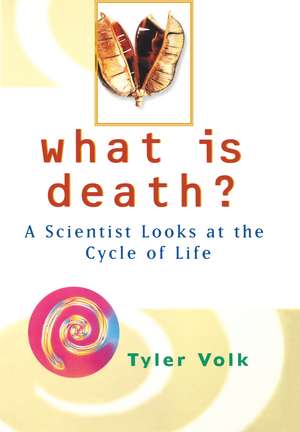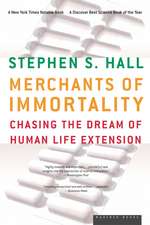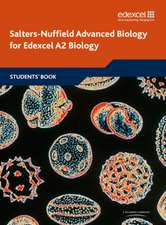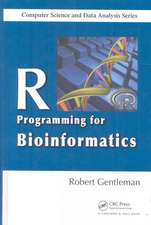What is Death?: A Scientist Looks at the Cycle of Life
Autor Tyler Volken Limba Engleză Hardback – 21 mar 2002
A Scientist Looks at the Cycle of Life
Answering the question "What is death?" by focusing on the individual is blinkered. It restricts attention to a narrow zone around the individual body of a creature. Instead, how expansive is the answer we receive when we look at the context of death within the biosphere. Death now is tied to all of life, via the atmosphere and ocean. Death supports the awesome biological enterprise of making abundant the green and squiggly life. Talk about death has headed us straight into a contemplation of life, not only individual life, but big life, life on a global scale. Death and life are neatly dovetailed by the supreme cabinetmaker of evolution. Again, the crucial feature is not the death of any one creature per se, but rather what is done with death. To reach into the meaning of death, we must reach out into the wider context of which death is a part.
Preț: 190.48 lei
Nou
Puncte Express: 286
Preț estimativ în valută:
36.45€ • 37.66$ • 30.34£
36.45€ • 37.66$ • 30.34£
Carte disponibilă
Livrare economică 04-18 martie
Preluare comenzi: 021 569.72.76
Specificații
ISBN-13: 9780471375449
ISBN-10: 0471375446
Pagini: 255
Dimensiuni: 161 x 243 x 23 mm
Greutate: 0.49 kg
Editura: Wiley
Colecția John Wiley &Sons
Locul publicării:Hoboken, United States
ISBN-10: 0471375446
Pagini: 255
Dimensiuni: 161 x 243 x 23 mm
Greutate: 0.49 kg
Editura: Wiley
Colecția John Wiley &Sons
Locul publicării:Hoboken, United States
Public țintă
General readers of trade science; readers interested in Gaia theory and new age perspectives on the world; readers interested in the relationship between science and religion.Descriere
what is death? A Scientist Looks at the Cycle of Life
Answering the question "What is death?" by focusing on the individual is blinkered. It restricts attention to a narrow zone around the individual body of a creature. Instead, how expansive is the answer we receive when we look at the context of death within the biosphere. Death now is tied to all of life, via the atmosphere and ocean. Death supports the awesome biological enterprise of making abundant the green and squiggly life. Talk about death has headed us straight into a contemplation of life, not only individual life, but big life, life on a global scale. Death and life are neatly dovetailed by the supreme cabinetmaker of evolution. Again, the crucial feature is not the death of any one creature per se, but rather what is done with death. To reach into the meaning of death, we must reach out into the wider context of which death is a part.
Answering the question "What is death?" by focusing on the individual is blinkered. It restricts attention to a narrow zone around the individual body of a creature. Instead, how expansive is the answer we receive when we look at the context of death within the biosphere. Death now is tied to all of life, via the atmosphere and ocean. Death supports the awesome biological enterprise of making abundant the green and squiggly life. Talk about death has headed us straight into a contemplation of life, not only individual life, but big life, life on a global scale. Death and life are neatly dovetailed by the supreme cabinetmaker of evolution. Again, the crucial feature is not the death of any one creature per se, but rather what is done with death. To reach into the meaning of death, we must reach out into the wider context of which death is a part.
Textul de pe ultima copertă
what is death? A Scientist Looks at the Cycle of Life
Answering the question "What is death?" by focusing on the individual is blinkered. It restricts attention to a narrow zone around the individual body of a creature. Instead, how expansive is the answer we receive when we look at the context of death within the biosphere. Death now is tied to all of life, via the atmosphere and ocean. Death supports the awesome biological enterprise of making abundant the green and squiggly life. Talk about death has headed us straight into a contemplation of life, not only individual life, but big life, life on a global scale. Death and life are neatly dovetailed by the supreme cabinetmaker of evolution. Again, the crucial feature is not the death of any one creature per se, but rather what is done with death. To reach into the meaning of death, we must reach out into the wider context of which death is a part.
Answering the question "What is death?" by focusing on the individual is blinkered. It restricts attention to a narrow zone around the individual body of a creature. Instead, how expansive is the answer we receive when we look at the context of death within the biosphere. Death now is tied to all of life, via the atmosphere and ocean. Death supports the awesome biological enterprise of making abundant the green and squiggly life. Talk about death has headed us straight into a contemplation of life, not only individual life, but big life, life on a global scale. Death and life are neatly dovetailed by the supreme cabinetmaker of evolution. Again, the crucial feature is not the death of any one creature per se, but rather what is done with death. To reach into the meaning of death, we must reach out into the wider context of which death is a part.
Cuprins
Introduction: Death Thus Life. PART 1: BRAIN.
The Three–Pound Miracle.
We Live in Two Different Worlds.
The Grateful Self.
PART 2: CULTURE.
Nobody Just Dies.
Managing Terror.
Death with Interconnected Dignity.
PART 3: BIOSPHERE.
Sex and Gatastrophic Senescence.
Lifestyle and Life Span.
Little Deaths, Big Lives.
Life and Death at the Smallest Scale.
Conclusion: Eternity′s Sunrise.
Notes.
Bibliography.
Acknowledgments.
Index.
The Three–Pound Miracle.
We Live in Two Different Worlds.
The Grateful Self.
PART 2: CULTURE.
Nobody Just Dies.
Managing Terror.
Death with Interconnected Dignity.
PART 3: BIOSPHERE.
Sex and Gatastrophic Senescence.
Lifestyle and Life Span.
Little Deaths, Big Lives.
Life and Death at the Smallest Scale.
Conclusion: Eternity′s Sunrise.
Notes.
Bibliography.
Acknowledgments.
Index.
Notă biografică
TYLER VOLK, Ph.D., is Associate Professor in the Department of Biology at New York University. He is the acclaimed author of Metapatterns: Across Space, Time, and Mind and Gaia’s Body: Toward a Physiology of Earth.









